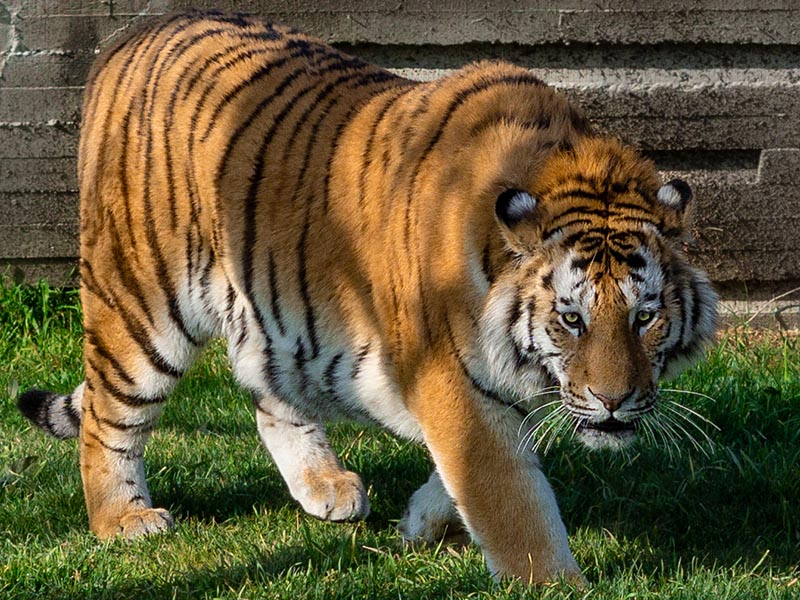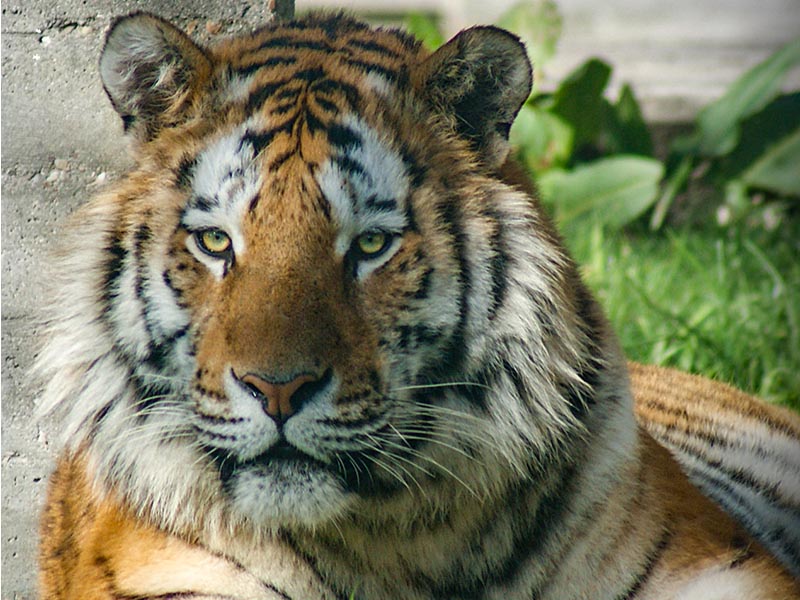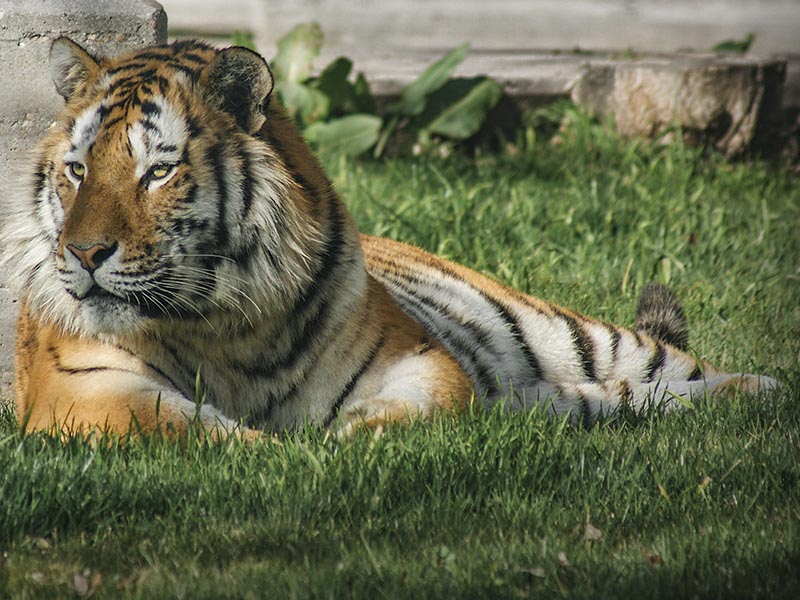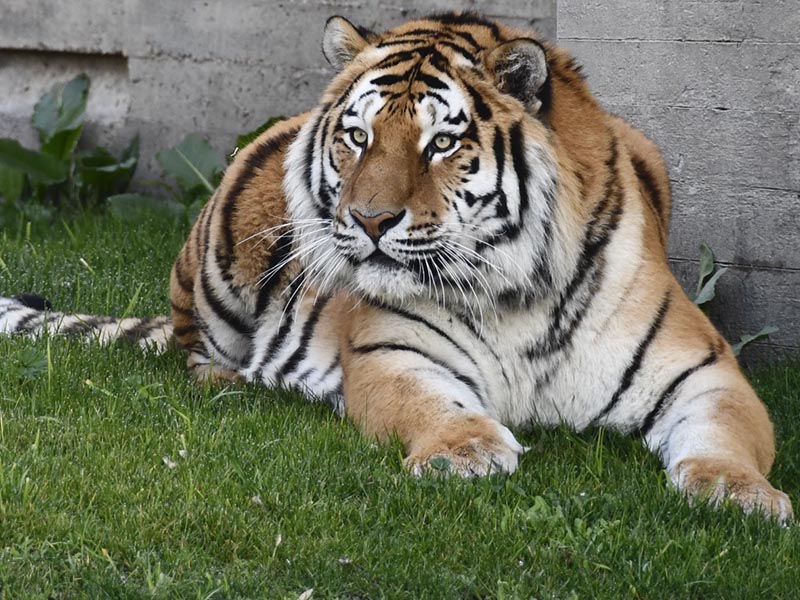The Siberian tiger, also known as the Amur tiger, is found in parts of Siberia, China, eastern Russia and North Korea, and is the only tiger that lives in northern climates. This majestic animal holds the title of the largest feline in the world, as it can weigh up to 300 kg in males.
Tigers are among the top predators, second only to bears. It is a carnivorous animal, as its diet is based mainly on roe deer, deer, goats and wild boar.
One of its main and most striking physical characteristics is its recognisable striped pattern, which is reddish-brown in summer, while varying to a more pronounced yellow in winter. This coat helps it blend in with its surroundings and withstand temperatures as low as -34°C in the wild, as it is longer and thicker than that of other tiger subspecies. Together with a layer of fat, which acts as an insulator, it is able to withstand these low temperatures. Its large, thick paws also act as snow boots, insulating it perfectly from the winter cold.
The Siberian tiger is a solitary species, and only groups consisting of mothers and cubs under 2 years of age are seen. The cubs (between 2 and 4 individuals) are born in spring, after a gestation period of 103 days.
Unfortunately, this magnificent animal faces a number of threats, including habitat loss and degradation, illegal trafficking of its organs (which are used in popular remedies without scientific basis) and the decline of its prey. It is crucial to take action to protect this iconic species and ensure its survival.
























